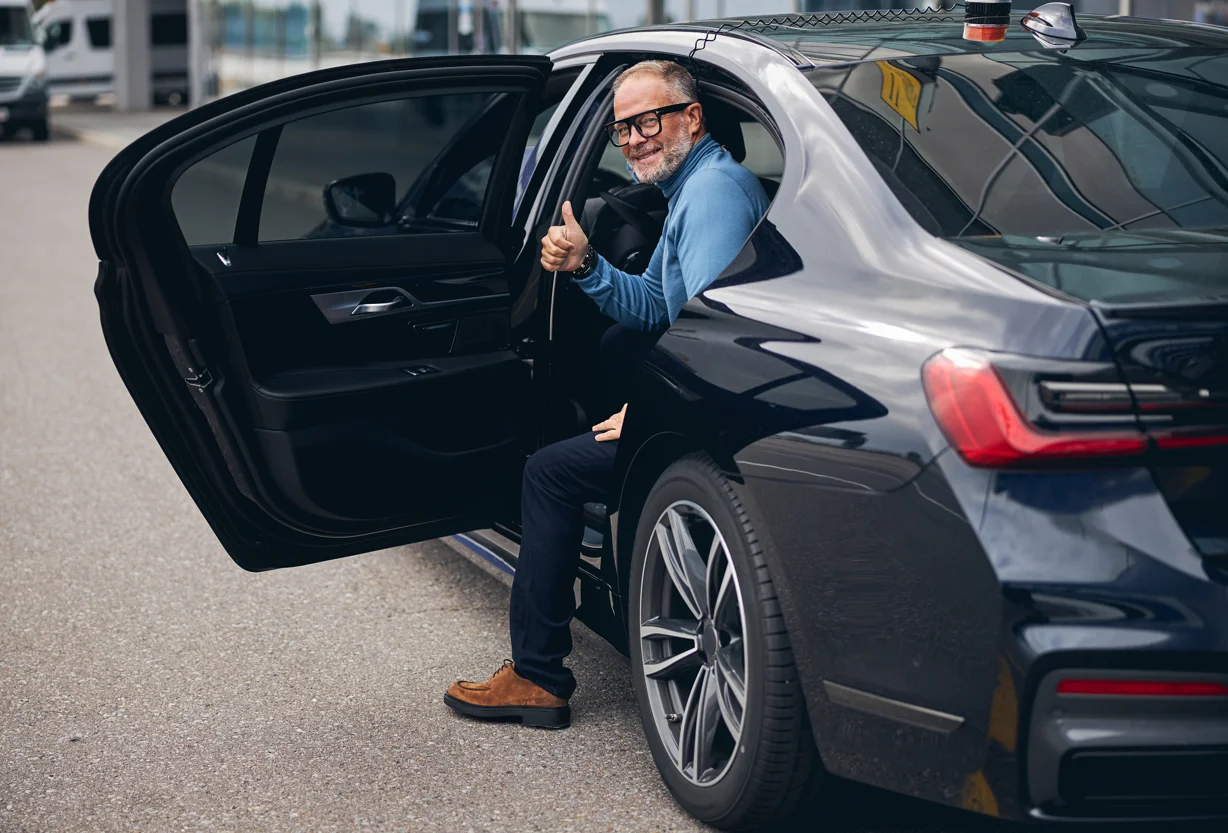
The role of technology in enhancing the Shofer driver experience is a topic of great importance in the transportation industry. As technology continues to advance at a rapid pace, it has the potential to revolutionize the way drivers interact with their vehicles and the overall driving experience. This article will explore the various ways in which technology is being utilized to enhance the Shofer driver experience, and the significance of these advancements in the context of the transportation industry. By harnessing the power of technology, drivers can benefit from improved safety, efficiency, and overall satisfaction, ultimately leading to a more enjoyable and productive driving experience.
Current Challenges Faced by Shofer Drivers
Shofer drivers face several common challenges in their profession, which significantly impact their satisfaction and overall experience.
High Competition and Market Saturation
The ride-hailing industry has become highly competitive, leading to market saturation in many areas. With numerous drivers vying for the same passengers, shofer drivers often struggle to secure enough rides to maintain a steady income. This intense competition can lead to reduced earnings and financial instability, causing dissatisfaction among drivers.
Uncertain and Inconsistent Earnings
Shofer drivers often face uncertain and inconsistent earnings due to various factors. Fluctuating demand, seasonal variations, and changing market dynamics can result in unpredictable income. This lack of stability makes it challenging for drivers to plan their finances and can lead to stress and dissatisfaction.
Long Working Hours and Fatigue
Shofer drivers often work long hours to maximize their earnings. The need to meet daily or weekly income targets can push drivers to work extended shifts, leading to fatigue and exhaustion. Prolonged driving hours without adequate rest can compromise driver safety and overall well-being, negatively impacting their experience on the job.
Safety Concerns and Risk of Assault
Shofer drivers face safety concerns, particularly during late-night shifts or in unfamiliar areas. They may encounter unruly or aggressive passengers, increasing the risk of assault or harassment. The lack of security measures and the inability to screen passengers beforehand contribute to the vulnerability of shofer drivers, affecting their sense of security and job satisfaction.
Lack of Benefits and Job Security
As independent contractors, shofer drivers often lack access to benefits such as health insurance, retirement plans, and paid time off. The absence of job security and the inability to rely on a stable income source can lead to stress and dissatisfaction among drivers. The gig economy nature of the profession also means that drivers have limited legal protections and may face challenges in resolving disputes with ride-hailing platforms.
Technological Challenges and Technical Issues
While technology plays a crucial role in enhancing the shofer driver experience, it also presents its own set of challenges. Drivers may encounter technical issues with the shofer app, such as connectivity problems, app crashes, or inaccurate navigation. These challenges can disrupt the smooth operation of their services, leading to frustration and dissatisfaction.
The aforementioned challenges significantly impact the satisfaction and overall experience of shofer drivers. Addressing these issues is crucial to improve driver well-being, retention rates, and the overall quality of service provided by shofer drivers.
Technological Solutions for Enhancing the Shofer Driver Experience
Technological advancements have revolutionized the transportation industry, offering numerous solutions to enhance the Shofer driver experience. These advancements not only improve the overall driving experience but also contribute to increased safety, efficiency, and convenience for drivers.
Advanced Navigation Systems
One of the key technological solutions for enhancing the Shofer driver experience is the implementation of advanced navigation systems. These systems utilize GPS technology to provide real-time traffic updates, accurate directions, and alternative routes. By integrating these systems into their vehicles, Shofer drivers can navigate through congested areas more efficiently, saving time and reducing stress. Additionally, advanced navigation systems can also provide information on nearby amenities such as gas stations, restaurants, and rest areas, ensuring a more convenient and comfortable journey for drivers.
Driver Assistance Systems
Driver assistance systems have emerged as a significant technological solution for enhancing the Shofer driver experience. These systems utilize various sensors and cameras to assist drivers in maneuvering their vehicles safely. For instance, features like lane departure warning, blind-spot detection, and forward collision warning systems can alert drivers to potential hazards, reducing the risk of accidents. Moreover, technologies like adaptive cruise control can automatically adjust the vehicle’s speed to maintain a safe distance from the vehicle ahead, enhancing both safety and convenience for Shofer drivers.
In-Car Communication and Entertainment
Technological solutions also focus on improving the communication and entertainment options available to Shofer drivers. Integrated Bluetooth systems enable hands-free calling, allowing drivers to stay connected while keeping their focus on the road. Additionally, voice recognition technology enables drivers to control various functions of the vehicle, such as adjusting the temperature or selecting a music playlist, without taking their hands off the steering wheel. Furthermore, entertainment systems, such as touchscreen displays and multimedia interfaces, provide drivers with access to music, podcasts, and other forms of entertainment, enhancing their overall driving experience.
Telematics and Fleet Management
Telematics and fleet management solutions play a crucial role in enhancing the Shofer driver experience, particularly for those working in a fleet-based environment. These systems utilize GPS technology and data analysis to monitor and manage various aspects of the fleet, including vehicle performance, fuel consumption, and driver behavior. By providing real-time insights and analytics, telematics systems enable Shofer drivers to optimize their driving habits, reduce fuel consumption, and improve overall efficiency. Additionally, these systems can also assist in scheduling and dispatching, ensuring a smoother and more organized workflow for drivers.
Conclusion
Technological solutions have significantly enhanced the Shofer driver experience by providing advanced navigation systems, driver assistance systems, in-car communication and entertainment options, as well as telematics and fleet management solutions. These advancements not only contribute to increased safety and efficiency but also offer convenience and comfort for Shofer drivers. As technology continues to evolve, it is expected that further innovations will continue to enhance the overall driver experience in the future.
Case Studies and Success Stories
Uber: Transforming the Ride-Hailing Industry
Uber, a leading ride-hailing company, has successfully implemented technology to enhance the Shofer driver experience. By leveraging their advanced mobile app and GPS tracking system, Uber has revolutionized the way drivers interact with passengers and navigate through cities.
Through the Uber app, drivers receive real-time ride requests, eliminating the need to wait for customers at designated pickup locations. This has significantly reduced idle time for drivers, allowing them to maximize their earnings and improve their overall experience. Additionally, the app provides turn-by-turn navigation, ensuring drivers can efficiently reach their destinations without getting lost.
Furthermore, Uber’s rating system enables drivers to receive feedback from passengers, helping them identify areas for improvement and enhance their service quality. This feedback loop has empowered drivers to provide a better experience for passengers, leading to increased customer satisfaction and higher ratings.
Lyft: Fostering a Sense of Community
Lyft, another prominent ride-hailing platform, has also utilized technology to enhance the Shofer driver experience. One notable feature is the Lyft Driver Hub, an online platform that provides drivers with valuable resources and support.
The Driver Hub offers a comprehensive knowledge base, including articles, videos, and tutorials, to help drivers improve their skills and stay updated on industry trends. This access to educational materials has empowered drivers to enhance their professionalism and provide a superior service to passengers.
Moreover, Lyft has implemented a mentorship program, where experienced drivers can guide and support new drivers. This initiative fosters a sense of community among drivers, allowing them to share their experiences, exchange tips, and build relationships. By leveraging technology to facilitate this mentorship program, Lyft has created a supportive environment that enhances the overall driver experience.
Grab: Enhancing Safety and Security

Grab, a leading ride-hailing service in Southeast Asia, has successfully implemented technology to prioritize the safety and security of Shofer drivers. One key feature is the Grab Guardian, an in-app emergency assistance tool.
With the Guardian feature, drivers can activate an emergency button in case of any safety concerns or threats. This immediately alerts Grab’s dedicated safety team, who can then take appropriate action to ensure the driver’s well-being. This proactive approach to driver safety has significantly enhanced the overall experience and peace of mind for Shofer drivers.
Additionally, Grab has implemented a robust driver verification process, including facial recognition technology and document verification. This ensures that only qualified and verified drivers are allowed to provide services, creating a safer environment for both drivers and passengers.
In conclusion, these case studies demonstrate how technology has played a pivotal role in enhancing the Shofer driver experience. Companies like Uber, Lyft, and Grab have successfully leveraged technology to improve driver efficiency, foster a sense of community, and prioritize safety and security. These implementations have resulted in positive outcomes, including increased earnings, improved service quality, and enhanced overall satisfaction for Shofer drivers.
Conclusion
In conclusion, the role of technology in enhancing the Shofer driver experience is of utmost importance in the transportation industry. Throughout this article, we have explored the current challenges faced by Shofer drivers and the impact these challenges have on their satisfaction and overall experience. However, technological solutions offer promising opportunities to address these challenges and improve the driver experience.
By embracing technology, Shofer drivers can benefit from increased safety, efficiency, and convenience. Advanced navigation systems, real-time traffic updates, and driver assistance features can help drivers navigate unfamiliar routes and avoid congestion, ultimately saving time and improving their overall efficiency. Additionally, in-car communication systems and mobile applications can provide drivers with instant access to important information, such as passenger details and trip updates, enhancing their convenience and reducing potential frustrations.
Real-life case studies and success stories have demonstrated the positive outcomes and improvements achieved through the implementation of technology in the Shofer driver experience. Companies and organizations that have embraced technology have witnessed increased driver satisfaction, improved customer ratings, and enhanced overall service quality. These success stories serve as inspiration for the wider adoption of technology in the industry.
Looking ahead, the future potential of technology in enhancing the Shofer driver experience is promising. With the rapid advancements in artificial intelligence, autonomous vehicles, and smart transportation systems, we can expect even greater improvements in driver safety, efficiency, and overall experience. As technology continues to evolve, it is crucial for the transportation industry to embrace these advancements and leverage them to create a more seamless and enjoyable experience for Shofer drivers.
In conclusion, by embracing technology and its potential, the Shofer driver experience can be significantly enhanced, leading to improved driver satisfaction, increased efficiency, and ultimately, a better overall transportation service.

